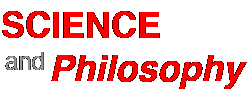Reading on: The principle of uncertainty
Matson, Floyd W. The Broken Image, George Braziler, New York 1964 [abridged — 600 words] — Uncertainty: the eclipse of mechanical determinism
The principle of uncertainty, first mathematically expressed by Heisenberg in 1927, declared that precisely the kind of information which was assumed by classical physics as the prerequisite to exact prediction—i.e., the simultaneous knowledge of position and velocity —was impossible of attainment in microphysics. The relationship of the two variables is such that the more accurately we measure the one the less accurately are we able to define the other…
The fact is that we cannot observe the course of nature without disturbing it…
It turned out, to put it simply, that the measuring instruments of microphysics themselves exert a distinct influence upon that which they seek to measure, thus rendering its behavior in one or another respect unpredictable. The very attempt to observe a particle “knocks it off its course,” and the more accurately we pin down its position, for example, the more unsure we are of the degree to which we have affected its momentum. Among atomic physicists, in short, there are no innocent bystanders; the act of observation is at the same time unavoidably an act of participation. As Andrade has succinctly put it: “Observation means interference with what we are observing. Observation disturbs reality.”…
Since the state of a particle is defined by its position and velocity together, we can never know exactly what that state is; consequently, we can never decide whether a given initial state determines subsequent states, and therefore the existence of rigorous causal connections and laws cannot be tested at all. In short, we can never be certain of the future because we are never in fact quite sure of the present.
In the new dispensation, of course, we are as well equipped as ever to answer particular experimental questions taken one by one, such as the position (or velocity or wave length) of a particle. What we can no longer hope to do is to “weave together these isolated segments into the web of perceptible and causal relations which alone constitutes the permanent objective nature of the classical scientific world view with its unchangeable ‘things.’”
We may choose which segment of the whole we wish to comprehend; but the whole itself eludes the grasp of the measurer. This is, as Oppenheimer has emphasized, a very different view of reality from that of Newton’s great machine: “It is not causal; there is no complete causal determination of the future on the basis of available knowledge of the present. It means that every intervention to make a measurement, to study what is going on in the atomic world, creates, despite all the universal order of this world, a new, a unique, not fully predictable, situation.”
This is not to say, of course, that the uncertainty relations of Heisenberg forbid the possibility of all prediction in the atomic realm; but only that the foresight which is open to us is solely that of probability rather than of certainty—a difference in degree which is ultimately a difference in kind. The old deterministic laws of the giant machine have given way, not indeed to “lawlessness” but to statistical calculations—to the laws of chance.
Today if we wish to read the fortune of a particle we must, as Bronowski observes, “allow it to have some uncertainty: some range of alternatives, some slack—what engineers call some tolerance.” And, of course, “once we have any uncertainty in prediction, in however small and distant a corner of the world, then the future is essentially uncertain—although it may remain overwhelmingly probable.”


